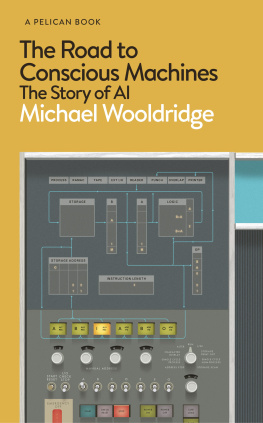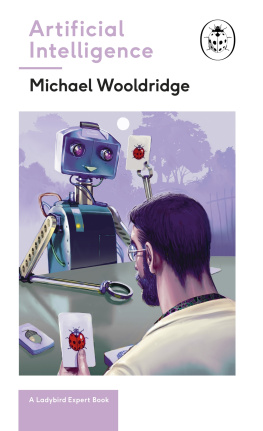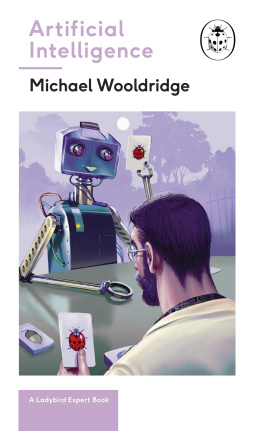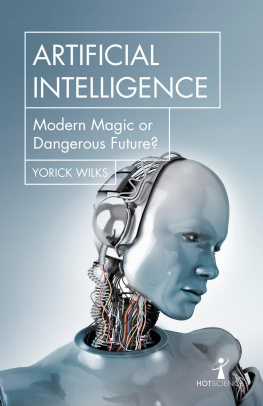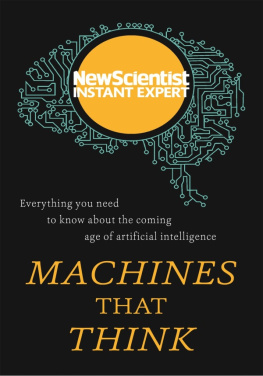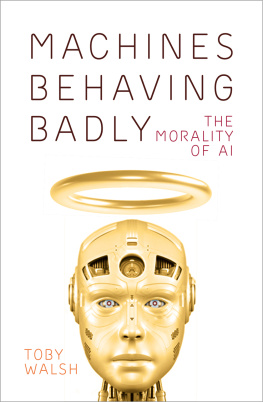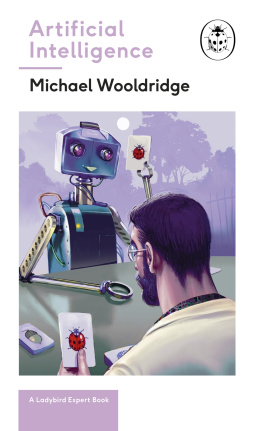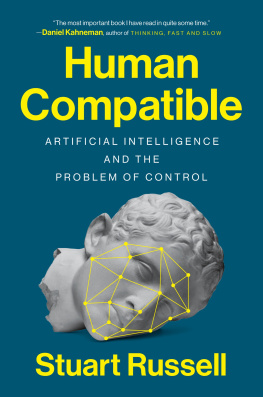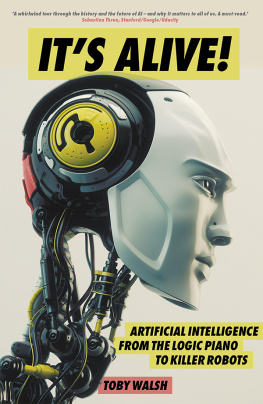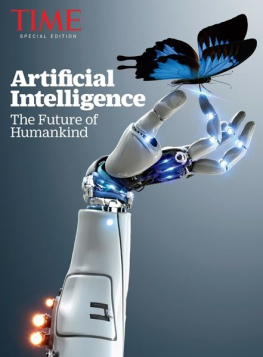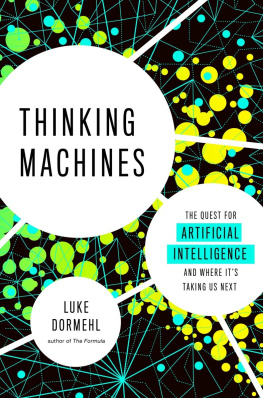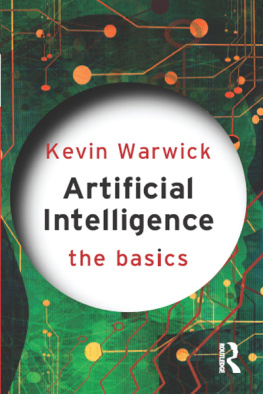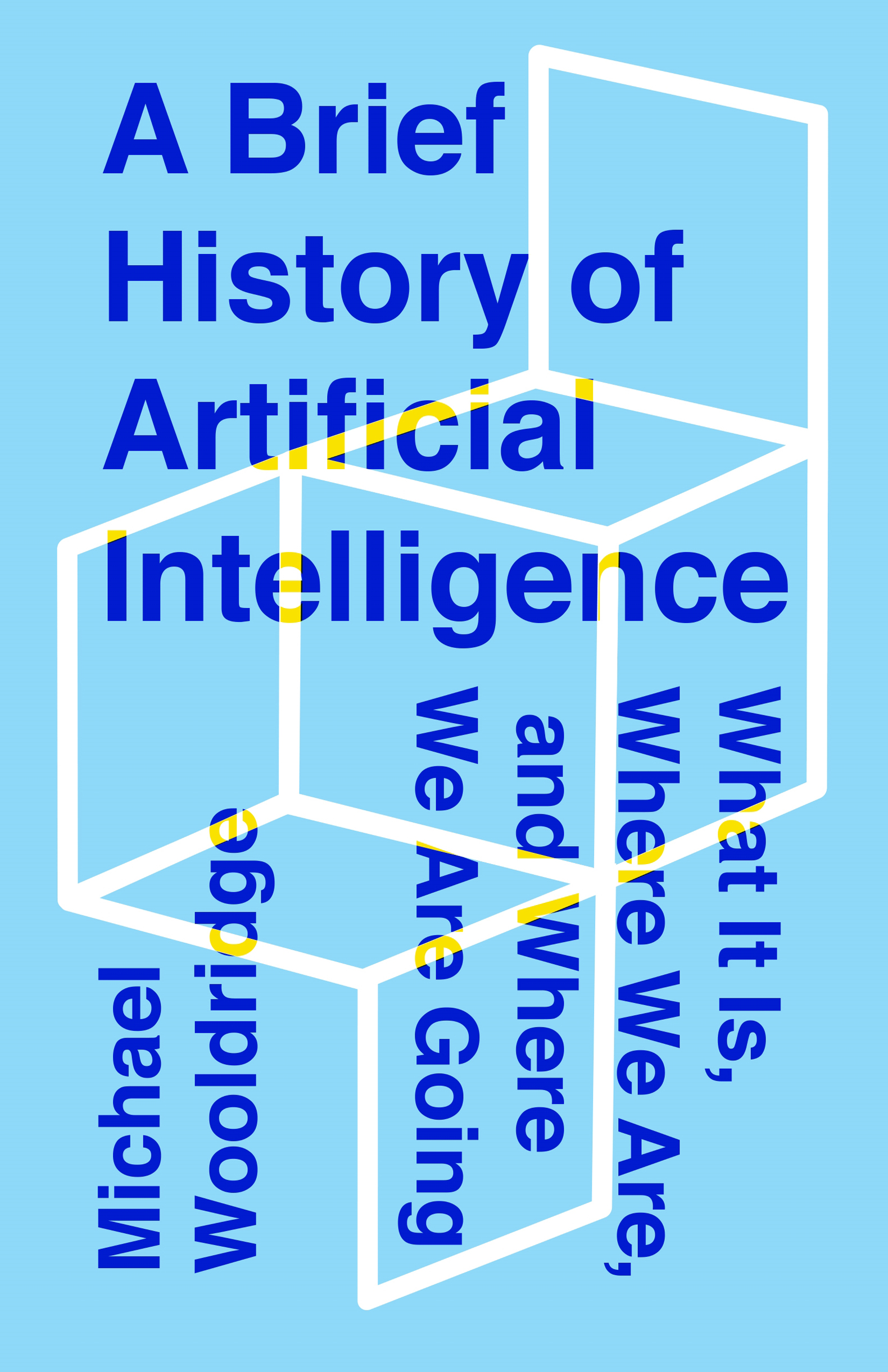The author and publisher have provided this e-book to you for your personal use only. You may not make this e-book publicly available in any way. Copyright infringement is against the law. If you believe the copy of this e-book you are reading infringes on the authors copyright, please notify the publisher at: us.macmillanusa.com/piracy.
ABOUT HALFWAY THROUGH writing this book, I was having lunch with a colleague.
What are you working on? she asked me.
This is a standard question for academicswe ask it of each other all the time. I should have been ready for it and had an impressive answer ready at hand.
Something a bit different. Im writing a popular science introduction to artificial intelligence.
She snorted. Does the world really need yet another popular science introduction to AI? Whats the main idea, then? Whats your new angle?
I was crestfallen. I needed a clever comeback. So I made a joke.
Its the story of AI through failed ideas.
She looked at me, her smile now faded. Its going to be a bloody long book, then.
Artificial intelligence (AI) is my life. I fell in love with AI as a student in the mid-1980s, and I remain passionate about it today. I love AI, not because I think it will make me rich (although that would be nice) nor because I believe it will transform our world (although, as we will see in this book, I believe it will do so in many important ways). I love AI because it is the most endlessly fascinating subject I know of. It draws upon and contributes to an astonishing range of disciplines, including philosophy, psychology, cognitive science, neuroscience, logic, statistics, economics, and robotics. And ultimately, of course, AI appeals to fundamental questions about the human condition and our status as Homo sapienswhat it means to be human, and whether humans are unique.
WHAT AI IS (AND ISNT)
My first main goal in this book is to tell you what AI isand, perhaps more important, what it is not. You might find this a little surprising, because it may seem obvious to you what AI is all about. Surely, the long-term dream of AI is to build machines that have the full range of capabilities for intelligent action that people haveto build machines that are self-aware, conscious, and autonomous in the same way that people like you and me are. You will probably have encountered this version of the AI dream in science fiction movies, TV shows, and books.
This version of AI may seem intuitive and obvious, but as we will see when we try to understand what it really means, we encounter many difficulties. The truth is we dont remotely understand what it is we want to create or the mechanisms that create it in people. Moreover, it is by no means the case that there is agreement that this really is the goal of AI. In fact, it is fiercely contentiousthere isnt even any consensus that this kind of AI is feasible, let alone desirable.
For these reasons, this version of AIthe grand dreamis difficult to approach directly, and although it makes for great books, movies, and video games, it isnt in the mainstream of AI research. Of course, the grand dream raises quite profound philosophical questionsand we will discuss many of these in this book. But beyond these, much of what is written about this version of AI is really nothing more than speculation. Some of it is of the lunatic fringe varietyAI has always attracted crackpots, charlatans, and snake oil salesmen as well as brilliant scientists.
Nevertheless, the public debate on AI, and the seemingly never-ending press fascination with it, is largely fixated on the grand dream and on alarmist dystopian scenarios that have become a weary trope when reporting on AI (AI will take all our jobs; AI will get smarter than we are, and then it will be out of control; superintelligent AI might go wrong and eliminate humanity). Much of what is published about AI in the popular press is ill-informed or irrelevant. Most of it is garbage, from a technical point of view, however entertaining it might be.
In this book, I want to change that narrative. I want to tell you about what AI actually is, what AI researchers actually work on, and how they go about it. The reality of AI for the foreseeable future is very different from the grand dream. It is perhaps less immediately attention grabbing, but it is, as I will show in this book, tremendously exciting in its own right. The mainstream of AI research today is focused around getting machines to do specific tasks that currently require human brains (and also, potentially, human bodies) and for which conventional computing techniques provide no solution. This century has witnessed important advances in this area, which is why AI is so fted at present. Automated translation tools are one example of an AI technology that was firmly in the realm of science fiction twenty years ago, which has become a practical, everyday reality within the past decade. Such tools have many limitations, but they are successfully used by millions of people across the globe every day. Within the next decade, we will see high-quality real-time spoken-word language translation and augmented reality tools that will change the way we perceive, understand, and relate to the world we live in. Driverless cars are a realistic prospect, and AI looks set to have transformative applications in health care, from which we will all stand to benefit: AI systems have proven to be better than people at recognizing abnormalities such as tumors on x-rays and ultrasound scans, and wearable technology, coupled with AI, has the potential to monitor our health on a continual basis, giving us advance warnings of heart disease, stress, and even dementia. This is the kind of thing that AI researchers actually work on. This is what excites me about AI. And this is what the AI narrative should be about.
To understand what AI today is and why AI is for the most part not concerned with the grand dream, we also need to understand why AI is hard to create. Over the past sixty years, huge amounts of effort (and research funding) have flowed into AI, and yet, sadly, robot butlers are not likely any time soon. So why has AI proved to be so difficult? To understand the answer to this question, we need to understand what computers are and what computers can do, at their most fundamental level. This takes us into the realm of some of the deepest questions in mathematics and the work of one of the greatest minds of the twentieth century: Alan Turing.
THE STORY OF AI
My second main goal in this book is to tell you the story of AI from its inception. Every story must have a plot, and we are told there are really only seven basic plots for all the stories in existence, so which of these best fits the story of AI? Many of my colleagues would dearly like it to be Rags to Riches, and it has certainly turned out that way for a clever (or lucky) few. For reasons that will become clear later, we could also plausibly view the AI story as Slaying the Beastthe beast, in this case, being an abstract mathematical theory called computational complexity, which came to explain why so many AI problems proved fearsomely hard to solve. The Quest would also work, because the story of AI is indeed rather like that of medieval knights on a quest to find the Holy Grail: full of religious fervor, hopeless optimism, false leads, dead ends, and bitter disappointments. But in the end, the plot that best fits AI is Fall and Rise, because, only twenty years ago, AI was a rather niche area with a somewhat questionable academic reputationbut since then, it has risen to be the most vibrant and celebrated area in contemporary science. It would be more accurate, though, to say that the plot to the AI story is Rise and Fall and Rise and Fall and Rise. AI has been the subject of continuous research for more than half a century, but during this time, AI researchers have repeatedly claimed to have made breakthroughs that bring the dream of intelligent machines within reach, only to have their claims exposed as hopelessly overoptimistic in every case. As a consequence, AI is notorious for boom-and-bust cyclesthere have been at least three such cycles in the past four decades. At several points over the past sixty years, the bust has been so severe that it seemed like AI might never recoverand yet, in each case, it did. If you imagine that science is all about orderly progress from ignorance to enlightenment, then Im afraid you are in for a bit of a shock.


